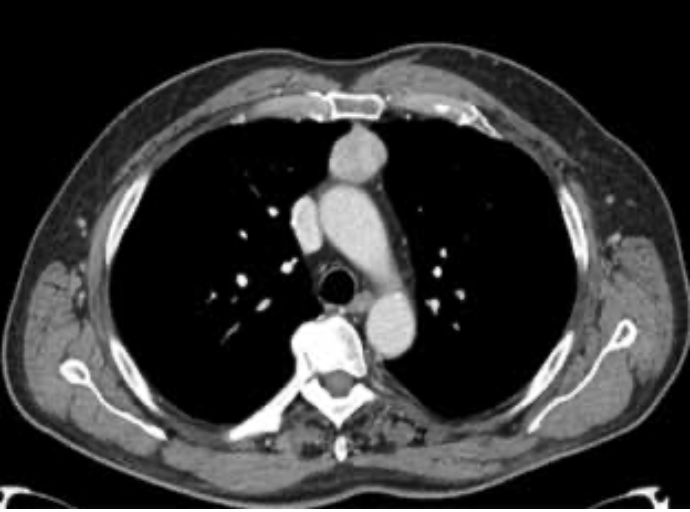Tóm tắt
Đặt vấn đề: U vùng trên yên và tuyến yên là một trong những tổn thương thường gặp ở sàn sọ trước. U vùng này chiếm khoảng 10% tỉ lệ khối u nội sọ. Mục tiêu phẫu thuật được đặt ra là lấy khối u giải áp thần kinh thị và bảo tồn được chức năng nội tiết cho người bệnh. Phẫu thuật nội soi mở rộng được áp dụng trong phẫu thuật loại u này. Với phẫu thuật này, người bệnh được ghi nhận hồi phục nhanh và cải thiện được triệu chứng của người bệnh sau xuất viện.
Đối tượng và phương pháp nghiên cứu: Báo cáo những trường hợp đã được phẫu thuật u vùng tuyến yên và trên yên bằng đường nội soi qua xương bướm tại bệnh viện Đa khoa Tâm Anh từ tháng 09/2023 đến tháng 09/2024.
Kết quả: Trong nghiên cứu 32 trường hợp, độ tuổi thường gặp nhất từ 40 -< 60 tuổi (40%) với tuổi trung bình 49,7 tuổi. Tỉ lệ Nữ: Nam=1,14:1. Biểu hiện với các hội chứng (HC): HC rối loạn thị giác (81,25%), HC rối loạn nội tiết (37,5%), HC tăng áp lực nội sọ (15,6%), HC xoang hang liệt dây sọ (12,5%). Ghi nhận giải phẫu bệnh: u tuyến yên (65,6%), nang rathke (12,5%), u sọ hầu (12,5%), u màng não củ yên (6,3%), u di căn từ K vòm họng (3,1%). Trong đó, lấy toàn bộ u (78,1%), lấy gần hết u (12,5%), lấy bán phần u (6,3%) và chỉ lấy 1 phần u (3,1%). GOS 5 chiếm (90,6%), GOS 4 (3,1%) và GOS 3 (6,3%). Tỉ lệ mờ mắt còn 15,6%. Chảy dịch não tuỷ qua mũi sau phẫu thuật (18,8%), viêm màng não sau phẫu thuật (15,6%) được điều trị kháng sinh.
Kết luận: Rối loạn thị giác là triệu chứng được cải thiện rõ so với trước phẫu thuật. Phẫu thuật u vùng trên yên và tuyến yên bằng phương pháp nội soi qua xương bướm mang lại kết quả tốt, mức độ lấy u đạt hiệu quả cao và khả năng hồi phục tốt cho người bệnh.
Từ khóa: Nội soi qua xương bướm, u tuyến yên, u sọ hầu, u màng não củ yên, lấy toàn bộ u, lấy gần hết u.
Sellar and suprasellar tumors: assessment of results endoscopic transphenoidal surgery
Mai Hoang Vu, Chu Tan Si, Dang Bao Ngoc, Huynh Tri Dung, Le Xuan Sang, Phan Van Dinh,
Phan Duy Quang
Tam Anh General Hospital Ho Chi Minh City
Abstract
Introduction: Sellar and suprasellar tumor is one of common lesions, found in the anterior cranial fossa. In this region, it accounts for about 10% of the intracranial tumors. The surgery is aiming to remove the tumors from optic nerve decompressure and preserve endocrine function of gland. Extended endoscopic surgery is applied in the treatment for these lesions. It helps the patients to be able recovered and improved clinical features better after surgery.
Patients and Methods: Report 32 patients who underwent endoscopic transphenoid surgery for the sellar and suprasellar tumors at Tam Anh hospital from September 2023 to September 2024.
Results: We reviewed 32 cases, the most common age group was 40 -< 60 years (40%) with an average age of 49.7 years. The female and male ratio was 1.14:1. manifested symptoms were: visual disturbance (81.3%), hormones disorder (37.5%), increased intracranial pressure (15.6%), cranial nerves injury (12.5%). Histopathology examinations: pituitary tumor (65.6%), Rathke cyst (12.5%), cranipharyngioma (12.5%), tuberculum meningioma (6.3%), metastasis tumor (3.1%). In this series we found gross total tumor removal (78,1%), near total removal (12,5%), subtotal tumor removal (6.3%) and partial tumor removal (3.1%). Regarding discharge conditions, there were GOS 5 (90.6%), GOS 4 (3.1%) and GOS 3 (6.3%) respectively. The rate of postoperative recovery vision was 65.7%. The complications occurred after surgery such as CFS leak was (18.8%), meningitis was (15.6%) treated medically with antibiotic.
Conclusions: Visual disturbance was one of clinical signs with improved significantly after surgery. Transphenoidal endoscopic surgery for sellar and suprasellar tumors achieved good results with tumor removal efficiency and good recovery.
Keywords: transsphenoid surgery, pituitary tumor, craniopharyngioma, tuberculum meningioma, gross total removal, near total removal.
Tài liệu tham khảo
- Alexandre Simonin et al. (2020): “Endonasal endoscopic resection of suprasellar craniopharyngioma: A retrospective single-center case series”, J Clin Neurosci, 2020 Nov:81:436-441.
- Christopher R. Roxbury (2016): “Endonasal Endoscopic Surgery in the Management of Sinonasal and Anterior Skull Base Malignancies”, Head Neck Pathol.2016 Mar; 10(1): 13–22.
- Douglas, Jennifer E., et al. (2024) “American Rhinologic Society expert practice statement part 1: Skull base reconstruction following endoscopic skull base surgery”International forum of allergy & rhinology. Vol. 14. No.9.
- Eric W Wang et al (2019): “ICAR: endoscopic skull-base surgery” , Int Forum Allergy Rhinol2019 Jul;9(S3):S145-S36,doi: 10.1002/alr.22326.
- Fraser, Shannon, et al. (2017) “Risk factors associated with postoperative cerebrospinal fluid leak after endoscopic endonasal skull base surgery.”Journal of neurosurgery128.4 (2018): 1066-1071.
- Ilaria Bove et al. (2023): “Endoscopic endonasal pituitary surgery: How we do it. Consensus statement on behalf of the EANS skull base section”, Brain and Spine, Elsevier Volume 3, 102687.
- Mingjian Lin et al. (2023): “Predictive value of suprasellar extension for intracranial infection after endoscopic transsphenoidal pituitary adenoma resection”, World J Surg Oncol, Nov 22;21(1):363.
- Prasheelkumar P Gupta et al. (2021): “Transnasal Endoscopic Surgery for Suprasellar Meningiomas”, Neurol India, May-Jun;69(3):630-635.
- Wassim Khalil et al. (2022): “Extended endoscopic transsphenoidal approach for suprasellar craniopharyngiomas”, Acta Neurochir (Wien), Mar;165(3):677-683.
- Yoon Hwan Byun et al. (2022): “Advances in Pituitary Surgery”, Endocrinol Metab 2022:37:608 – 616.



